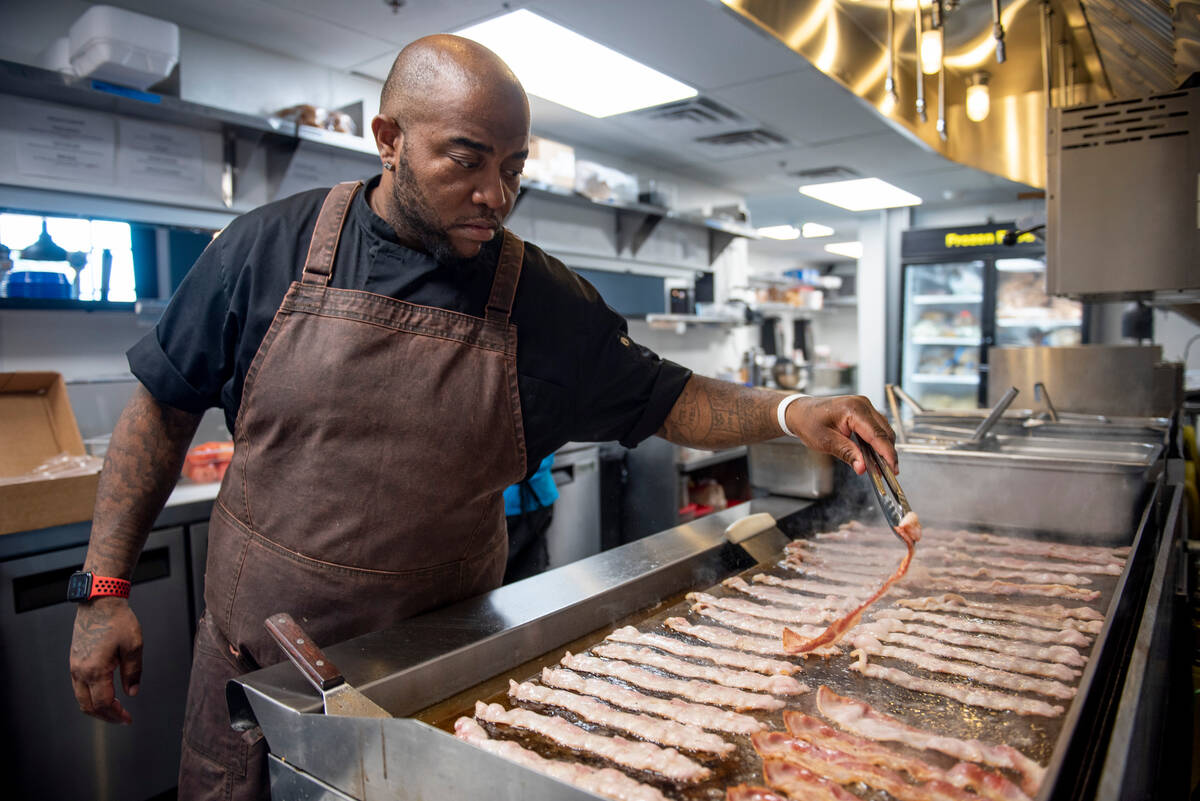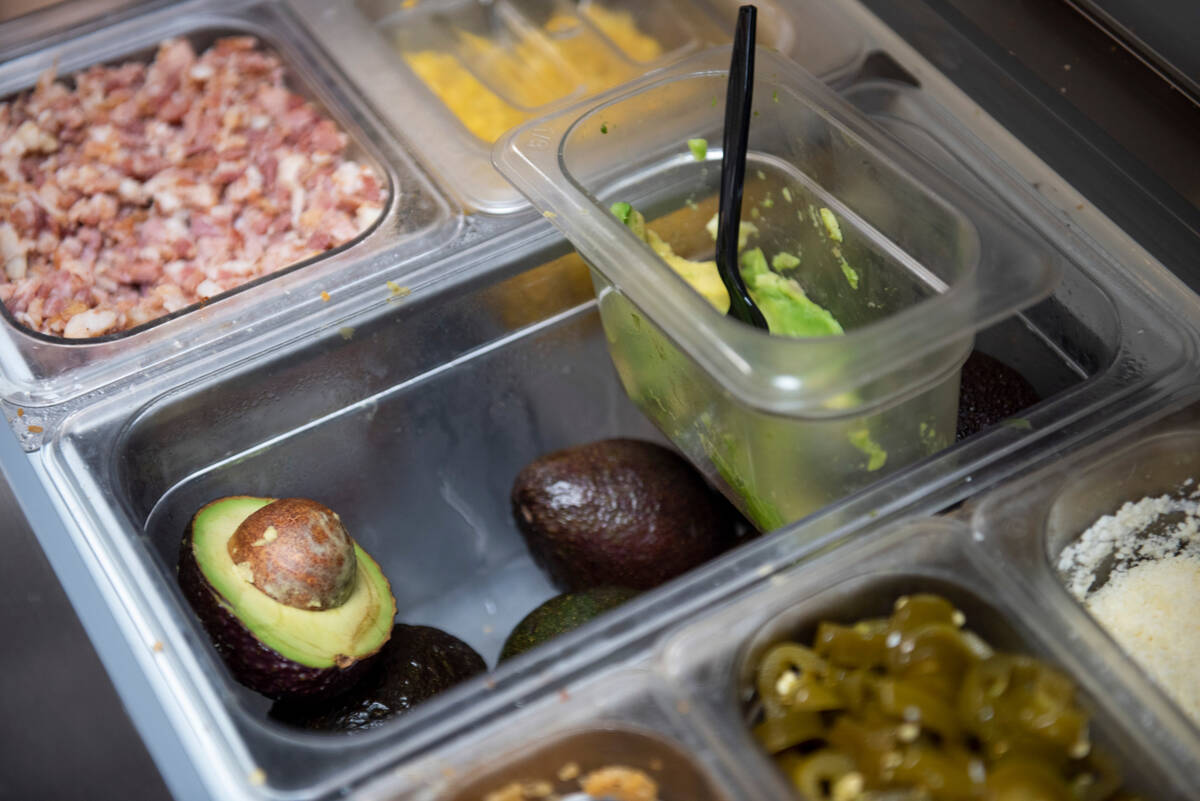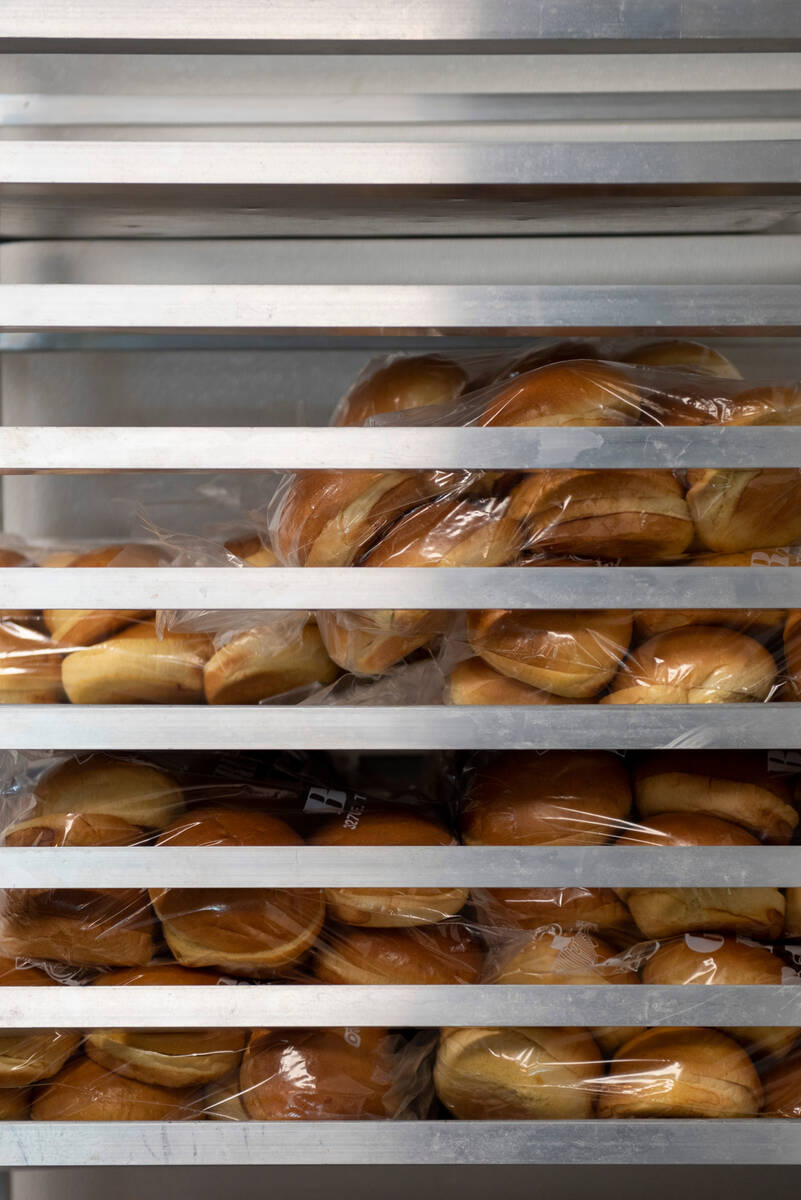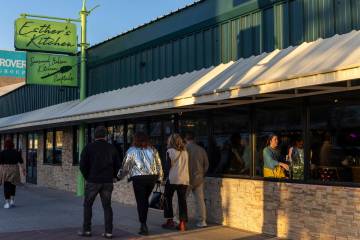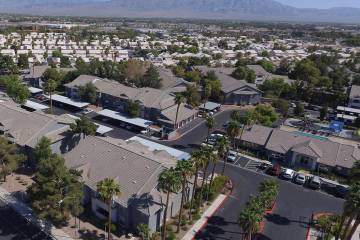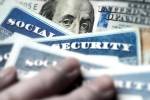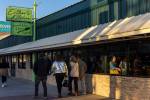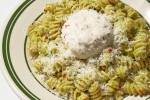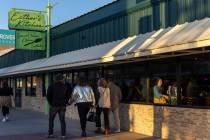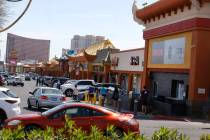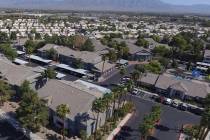‘Adapt or give up’: Southern Nevadans forced to adjust as inflation rises
Daniel Carlson was visiting Las Vegas from Houston and was shocked by the food prices that greeted him at an Albertsons grocery store on Rainbow Boulevard last week.
“Even egg whites cost triple here than what they would in Houston,” he said.
Carlson, who was in town for a bodybuilding competition, said shopping in Las Vegas made him much more aware of the country’s chronically high inflation.
Consumer prices have continued to spike with shoppers paying more for food, rent and even furniture. Two weeks ago, the Labor Department reported its consumer price index rose 8.3 percent in August and core prices, which excludes food and energy costs, rose by 6.3 percent, a figure higher than economists anticipated.
Those increases pushed the Federal Reserve to raise its key interest rate last week by three-quarters of a point for the third straight time, an aggressive move to tamp down inflation — boosting its benchmark short-term rate to a range of 3 percent to 3.25 percent, the highest level since early 2008. And the central bank signaled more rate hikes are likely coming this year.
Higher rates will make it harder for consumers to borrow for purchases such as homes and vehicles. But with prices on goods already high because of inflation many consumers and businesses in Southern Nevada have already found themselves making adjustments.
Carlson said he’s adapted to higher prices by buying in bulk at stores like Costco.
Las Vegas resident William Warner, a retiree who lives on a set income, said he’s had to cut back on purchasing certain items to stay within budget.
Warner said it’s become more difficult over the last year because of higher food and gas prices, but there’s not much that can be done.
“You either have to adapt or give up,” he said. “And I’m not ready to give up just yet.”
‘Hell or high water’
Stephen Miller, research director at UNLV’s Center for Business and Economic Research, said the August inflation report showed that a lot hasn’t changed in the economy.
“I don’t think there’s been really much of a change, the Fed is in charge,” Miller said. “And they’re going to reduce inflation, come hell or high water. It’s a short term cost in that the cost of not doing it now is that the longer term cost will be higher.”
Federal Reserve Chair Jerome Powell acknowledged in a speech last month that the Fed’s moves will “bring some pain” to households and businesses. He added that the central bank’s commitment to bringing inflation back down to its 2 percent target was “unconditional.”
Short-term rates at a level the Fed is now envisioning would make a recession likelier next year by sharply raising the costs of mortgages, car loans and business loans. But the potential pain consumers will feel is to help reel in the rising cost of goods and services.
Consumer prices have remained stubbornly high since last year, according to data from the Bureau of Labor Statistics. In August 2019, the consumer price index was at 1.7 percent compared to the same period a year ago and remained under 2 percent until March 2021, when it reached 2.6 percent year over year. Since then, the CPI has steadily increased, hitting a record 9.1 percent in June.
The latest CPI report showed food prices in August have climbed 11.4 percent year over year. Dairy products increased by 16.2 percent and cereals and bakery products spiked by 16.4 percent. Meanwhile, prices on meats, poultry, fish and eggs have increased 10.6 percent year over year, according to the BLS.
Cathie Ricco of Las Vegas said prices on goods are “ridiculous.”
“I have to use coupons now, which I have never done before, because of these terrible food prices,” Ricco said. “I just have to.”
Three Square Director of Advocacy and Research Regis Whaley said the demand for the food bank services have increased by 8 percent in the second quarter of 2022, after food and gas prices spiked when Russia invaded Ukraine.
He said that inflation has increased demand more than when most pandemic-era government relief programs expired.
“We started to see people that had access to benefits, and were losing them but seemed to be okay,” Whaley said. “And then all of a sudden, people were having to come back to food pantries in numbers that were really on par with some of the height of the pandemic.”
Business costs going up
Jason Anderson, CEO of H20 Food Services, which manages restaurants in Henderson, has impacted all levels of his company’s operations.
“Inflation is driving up the cost of goods on everything,” Anderson said. “The truck drivers are suffering from gas prices, and that kind of trickles down from there.”
Labor costs have also increased for Anderson, who said it’s been difficult filling positions at its eateries Street Burger and Biscuits & Bourbon.
“We definitely had to start paying more money than we were used to, and that definitely hurt,” he said, adding that it needed to stay competitve since other restaurants are also looking for staff.
Anderson said the company has made several changes to prevent passing off its higher costs to customers.
“We’ve gotten creative as we just found different products to supplement the ones that either we can’t get at that time, or they have raised the prices to the point of it’s just not feasible to put it on our menu,” Anderson said.
Nur Patino said inflation has impacted all aspects of her life.
She now carpools with friends to the grocery store to save on gas, and said she gets a “lot less” for $100 at the store.
Patino, a self-employed certified nursing assistant, has also seen her client list dwindle. She would usually see more than five clients a week but now that number is closer to one or two clients.
“This inflation just makes everything more stressful,” Patino said.
Scott Muelrath, president and CEO of the Henderson Chamber of Commerce, is hopeful that Southern Nevada will be able to weather the economic challenges brought on by inflation.
He said the Henderson Chamber has been able to get to its pre-pandemic membership numbers, after losing 10 percent of its members during the pandemic.
Predicting how the economy will perform and the direction of inflation is difficult, but Miller believes Nevadans saw inflation peak when it hit 9.1 percent in June.
“It’ll be a gradual decline, and I think the Fed may have difficulty getting down to pre-pandemic levels,” Miller said.
Muelrath is confident that Southern Nevada’s economy will stay afloat, but said there are risks if inflation continues to remain elevated.
“We’re in a strange moment right now, where our local economy has largely been able to power through to this point,” he said. “Depending on how long this cycle occurs with inflation, it will really start wearing on our local economy.”
Contact Sean Hemmersmeier at shemmersmeier@reviewjournal.com. Follow @seanhemmers34 on Twitter.



